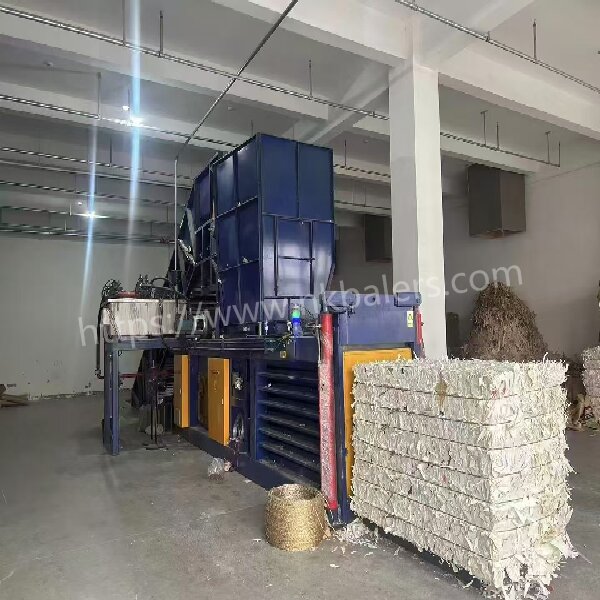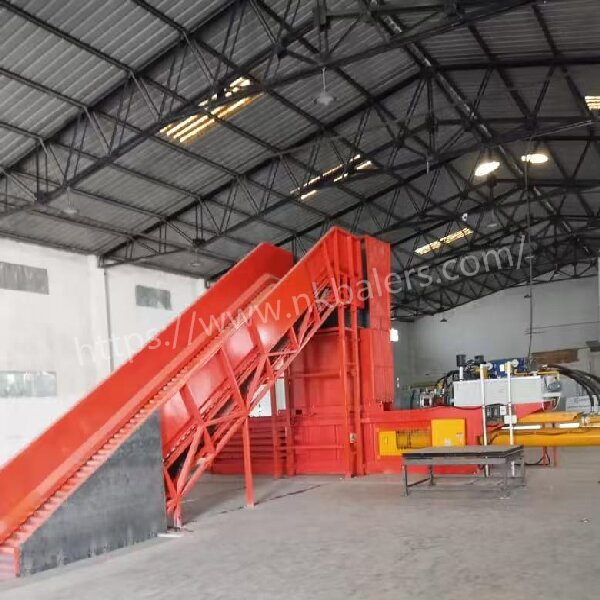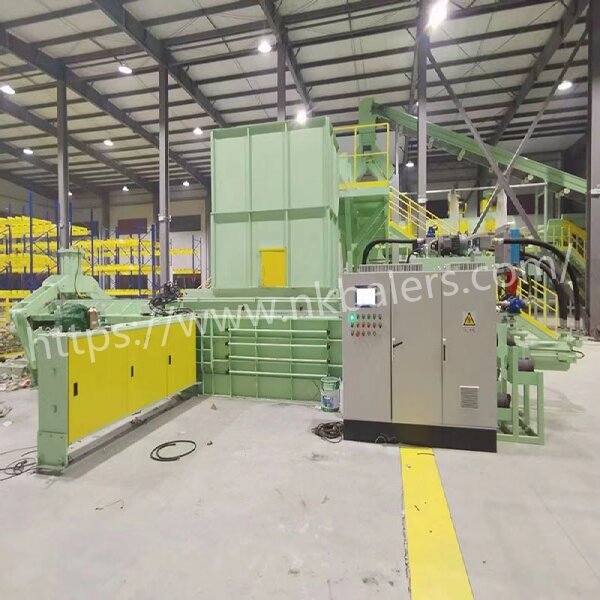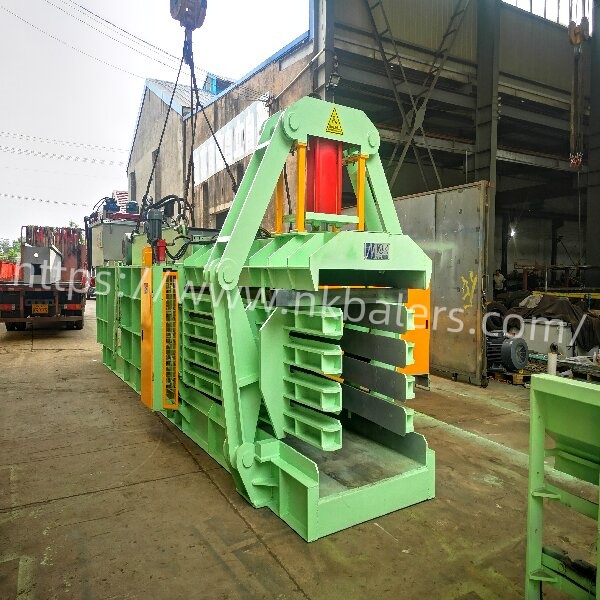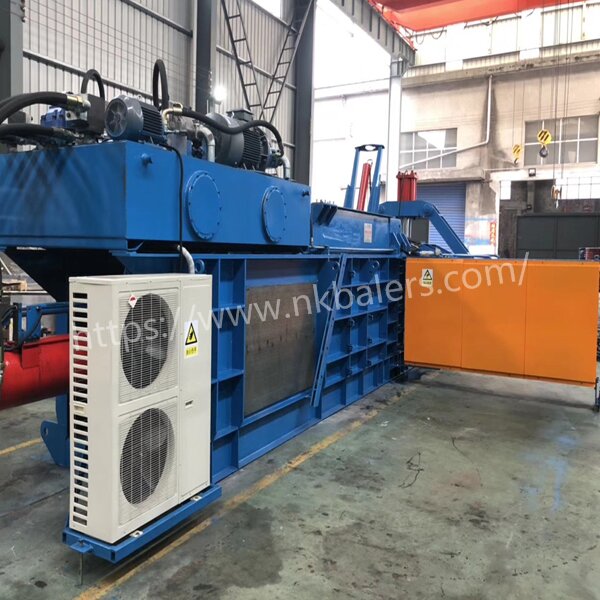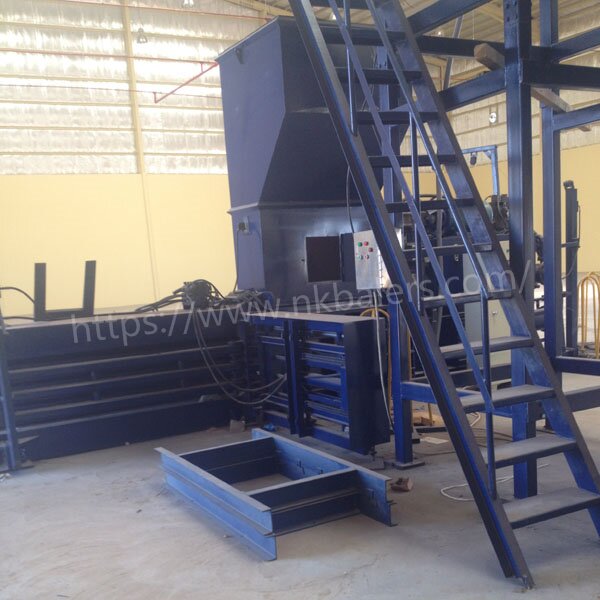The manufacturing of cardboard paper horizontal balers is a specialized process that combines engineering precision, advanced technology, and a deep understanding of waste management needs. These machines are essential for industries dealing with large volumes of cardboard waste, such as retail, e-commerce, logistics, and recycling centers. This article delves into the key aspects of manufacturing horizontal balers for cardboard, including design considerations, production processes, and market trends
What is a Cardboard Paper Horizontal Baler?
A horizontal baler is a heavy-duty machine designed to compress loose cardboard into dense, uniform bales for easy storage, transportation, and recycling. Unlike vertical balers, horizontal models process materials horizontally, enabling higher throughput and automation. They are ideal for high-volume operations where efficiency and bale density are critical.
Key Components of a Horizontal Baler
- Hydraulic System
- Powers the compression mechanism.
- Includes pumps, cylinders, and valves for precise control.
- Compression Chamber
- Houses the cardboard during baling.
- Made from high-strength steel to withstand pressure.
- Feeding System
- Wide hopper for continuous material input.
- Conveyor belts or manual feeding options.
- Tying Mechanism
- Automatically ties bales with wires or straps.
- Ensures bales remain intact during handling.
- Control Panel
- PLC-based systems for automated operation.
- Touchscreen interfaces for user-friendly control.
- Ejection System
- Pushes finished bales out of the chamber for easy removal.
Manufacturing Process
1. Design and Engineering
- Material Analysis: Study cardboard properties (density, moisture resistance) to optimize compression.
- Customization: Design balers for specific customer needs (e.g., bale size, throughput capacity).
- 3D Modeling: Use CAD software to create detailed blueprints and simulate performance.
2. Material Selection
- Steel Frame: High-grade steel for durability and load-bearing capacity.
- Hydraulic Components: Premium pumps and cylinders for reliable operation.
- Wear-Resistant Parts: Hardened steel for blades and compression plates.
3. Fabrication
- Cutting and Welding: Precision cutting of steel components and welding for structural integrity.
- Assembly: Integration of hydraulic systems, control panels, and safety features.
- Surface Treatment: Anti-corrosion coatings to enhance longevity.
4. Quality Control
- Pressure Testing: Verify hydraulic system performance under load.
- Safety Checks: Ensure compliance with international standards (e.g., CE, OSHA).
- Operational Testing: Run trials with cardboard to confirm bale density and tying efficiency.
5. Packaging and Shipping
- Disassembly: Break down large balers for easier transportation.
- Protective Packaging: Use crates and foam to prevent damage during transit.
- Documentation: Include user manuals, maintenance guides, and compliance certificates.
Market Trends in Horizontal Baler Manufacturing
- Automation and IoT Integration
- Smart balers with real-time monitoring and predictive maintenance.
- Remote diagnostics for faster troubleshooting.
- Sustainability Focus
- Energy-efficient hydraulic systems to reduce carbon footprint.
- Use of recycled materials in manufacturing.
- Customization
- Modular designs for easy upgrades and adaptations.
- Tailored solutions for niche markets (e.g., small businesses, large-scale recycling plants).
- Global Demand Growth
- Rising e-commerce activity driving cardboard waste volumes.
- Increasing adoption in emerging markets like India, Southeast Asia, and Africa.
Applications of Cardboard Horizontal Balers
- Retail and Supermarkets: Baling shipping boxes and packaging waste.
- E-Commerce Fulfillment Centers: Managing high volumes of cardboard from online orders.
- Recycling Facilities: Processing mixed waste streams for resale.
- Manufacturing Plants: Handling cardboard from raw material packaging.
Why Invest in Horizontal Baler Manufacturing?
- Growing Demand: The global baler market is projected to grow at a CAGR of 5.2% (2023–2030).
- Profitability: High-margin business with recurring revenue from spare parts and maintenance.
- Sustainability Impact: Contribute to global recycling efforts and circular economy goals.
